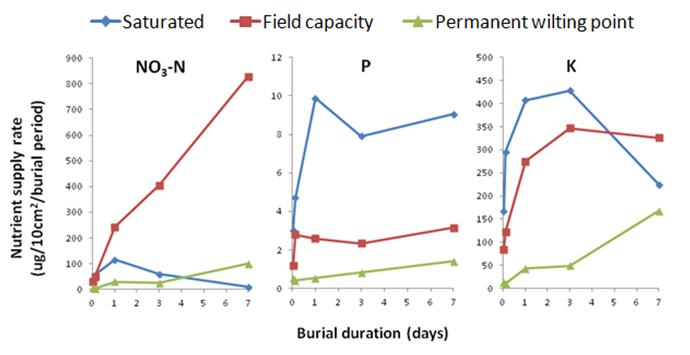PRS Technology
Soil moisture has a large effect on nutrient availability to plants through its impact on physical (diffusion), chemical (solubility) and biological (uptake, mineralization, and immobilization) processes affecting ion flow in soil. At low soil moisture contents, the nutrient supply rate to plant roots and the PRS® Probe is slow due to increased tortuousity of ion movement, whereas a traditional soil extraction will render the same nutrient concentration (i.e., mg/g) whether the soil is sampled moist or dry. In locations where soils are periodically saturated during the growing season, denitrification and leaching losses may cause reduced N supply rates. In extremely dry or wet soil, reduced microbial activity further affects nutrient supply to plant roots and the PRS® Probe. Such edaphic controls on nutrient availability are accounted for with long-term burials of PRS® Probes in situ, unlike traditional soil extractions that do not take such temporal variability into account if not taken consistently throughout the growing season.
Influence of soil moisture content on one-hour PRS Probe nutrient supply rates (Qian and Schoenau, 1997)
|
Soil Moisture Content |
Nutrient Supply Rate (μg/10cm²/hour) |
|||
|---|---|---|---|---|
|
(% Field Capacity) |
N |
P |
K |
S |
|
Saturated |
141a |
2.3a |
109a |
25a |
|
100 |
100b |
1.4b |
91b |
20b |
|
70 |
98b |
0.7c |
78c |
19b |
|
45 |
57c |
0.5d |
47d |
13c |
|
15 |
12c |
0.2d |
24e |
6d |
Influence of soil moisture on nutrient supply rates during a one week-burial (unpublished data).

